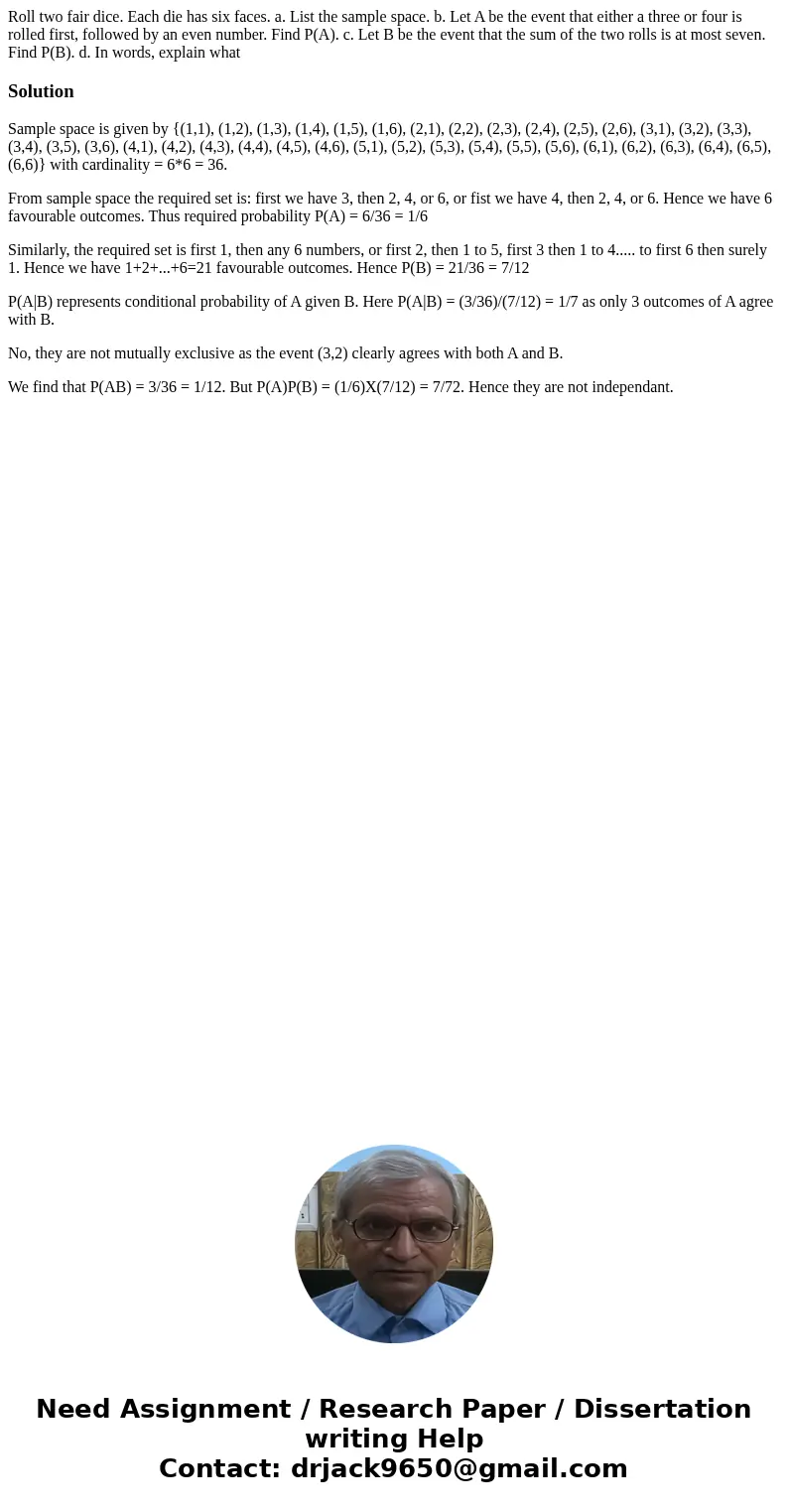Roll two fair dice Each die has six faces a List the sample
Roll two fair dice. Each die has six faces. a. List the sample space. b. Let A be the event that either a three or four is rolled first, followed by an even number. Find P(A). c. Let B be the event that the sum of the two rolls is at most seven. Find P(B). d. In words, explain what
Solution
Sample space is given by {(1,1), (1,2), (1,3), (1,4), (1,5), (1,6), (2,1), (2,2), (2,3), (2,4), (2,5), (2,6), (3,1), (3,2), (3,3), (3,4), (3,5), (3,6), (4,1), (4,2), (4,3), (4,4), (4,5), (4,6), (5,1), (5,2), (5,3), (5,4), (5,5), (5,6), (6,1), (6,2), (6,3), (6,4), (6,5), (6,6)} with cardinality = 6*6 = 36.
From sample space the required set is: first we have 3, then 2, 4, or 6, or fist we have 4, then 2, 4, or 6. Hence we have 6 favourable outcomes. Thus required probability P(A) = 6/36 = 1/6
Similarly, the required set is first 1, then any 6 numbers, or first 2, then 1 to 5, first 3 then 1 to 4..... to first 6 then surely 1. Hence we have 1+2+...+6=21 favourable outcomes. Hence P(B) = 21/36 = 7/12
P(A|B) represents conditional probability of A given B. Here P(A|B) = (3/36)/(7/12) = 1/7 as only 3 outcomes of A agree with B.
No, they are not mutually exclusive as the event (3,2) clearly agrees with both A and B.
We find that P(AB) = 3/36 = 1/12. But P(A)P(B) = (1/6)X(7/12) = 7/72. Hence they are not independant.

 Homework Sourse
Homework Sourse